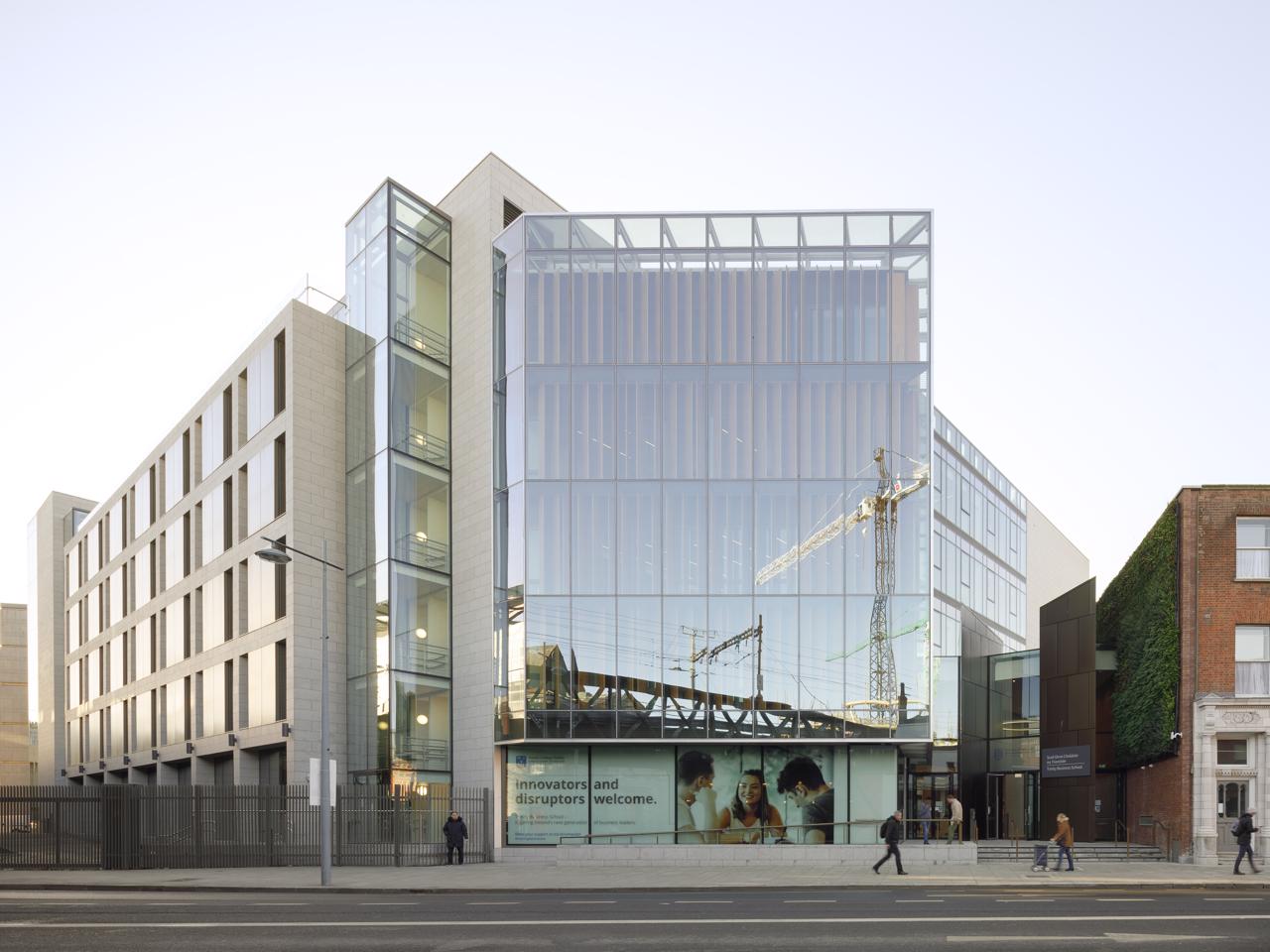
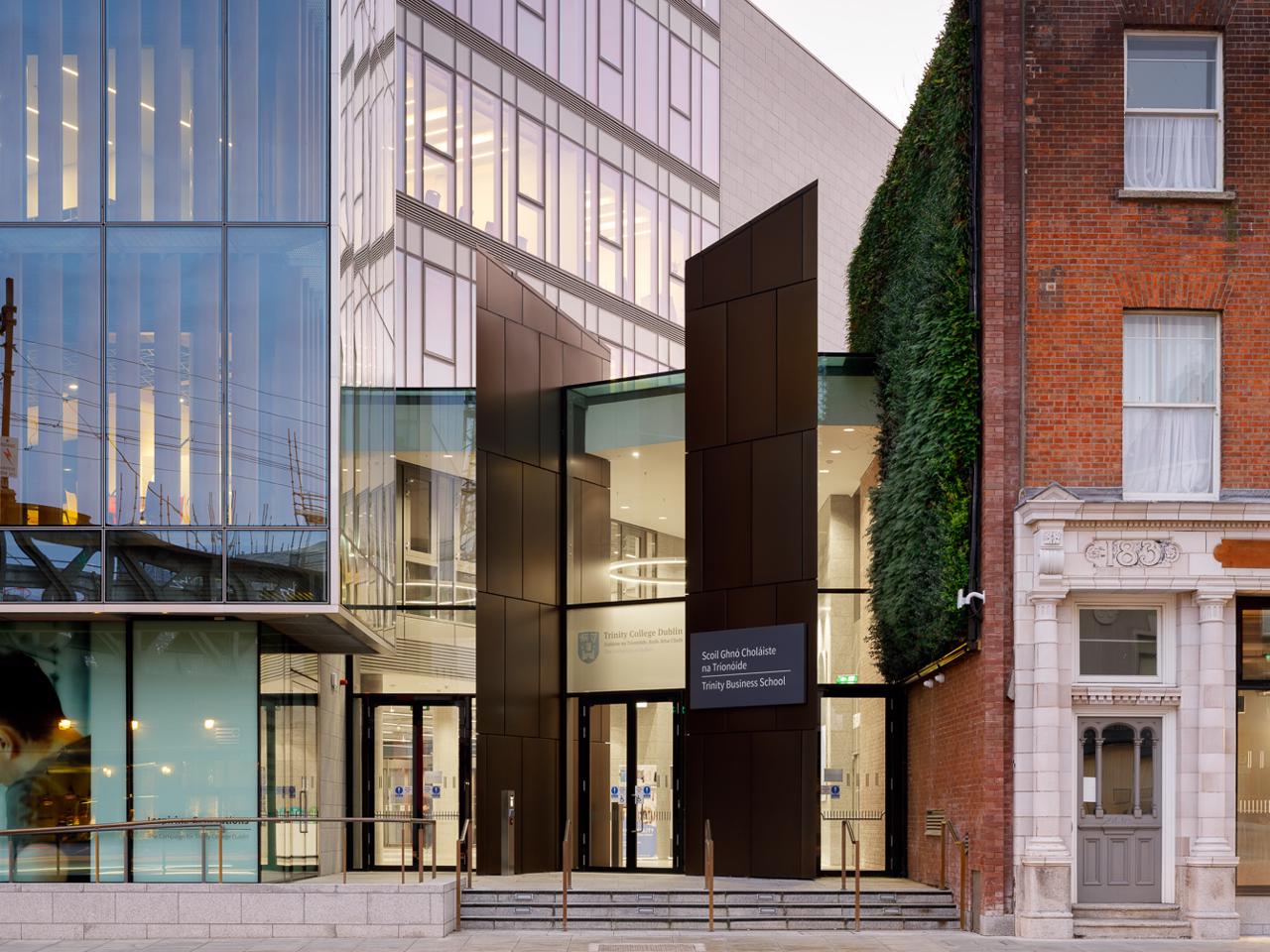
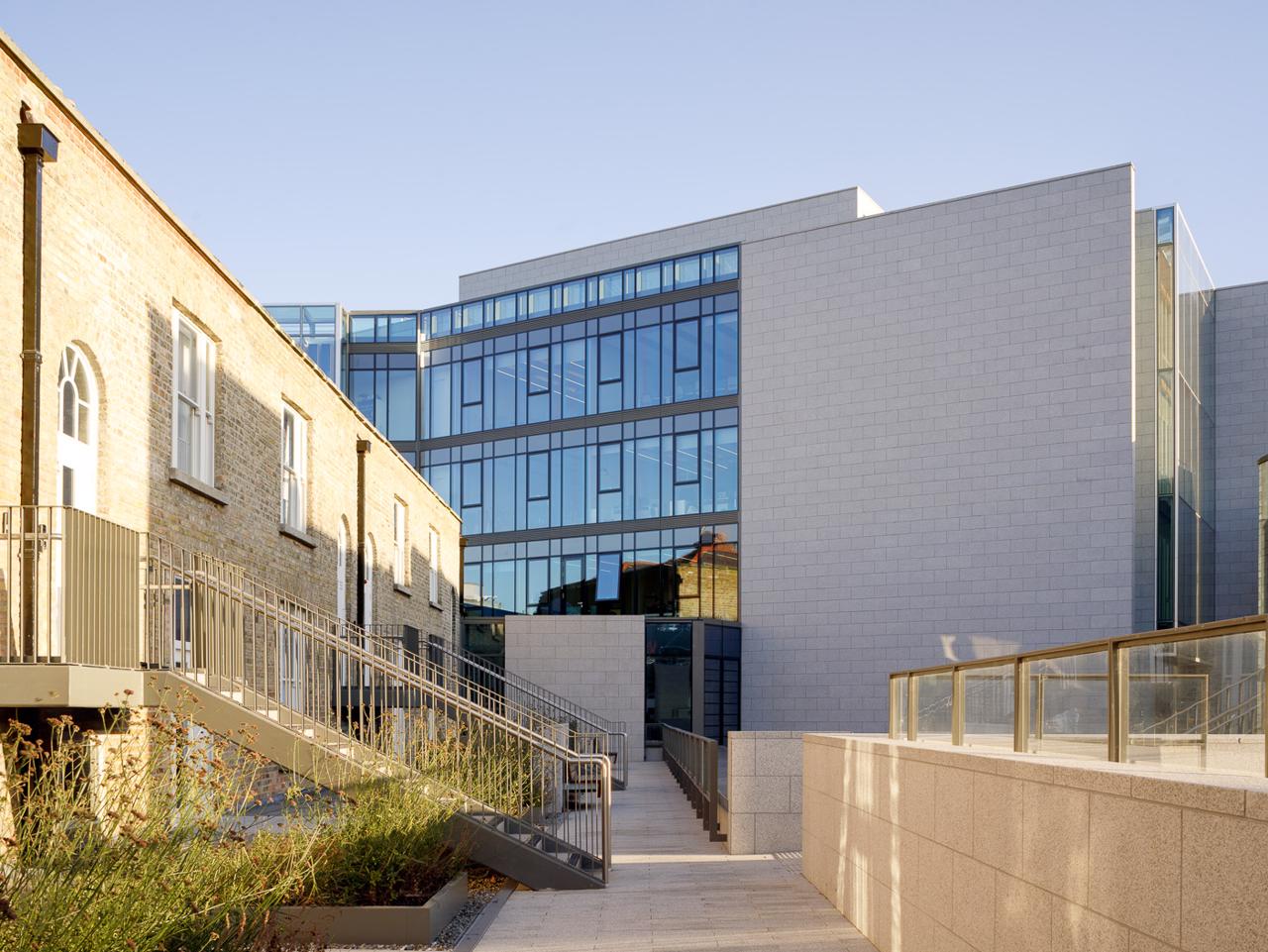
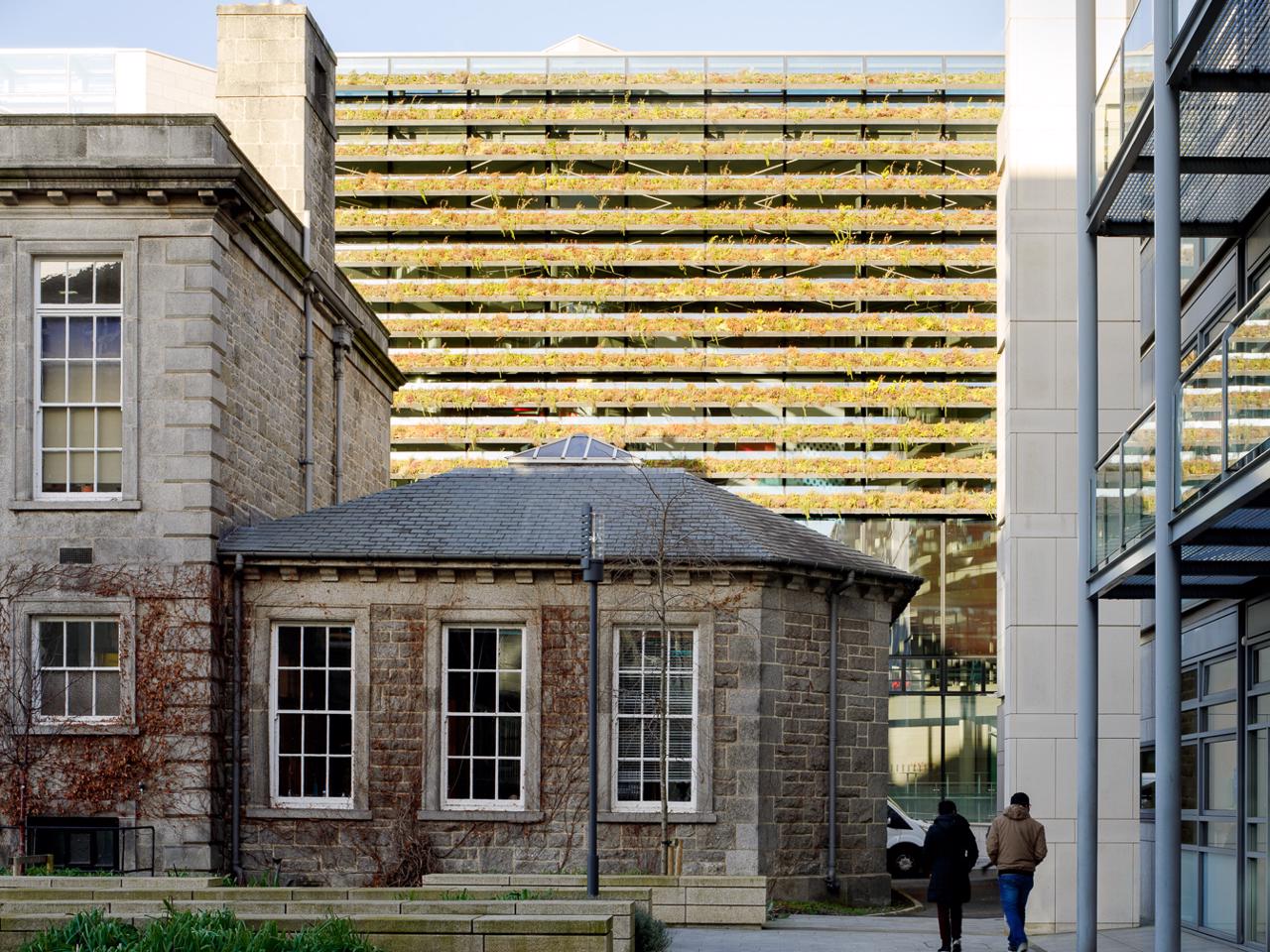
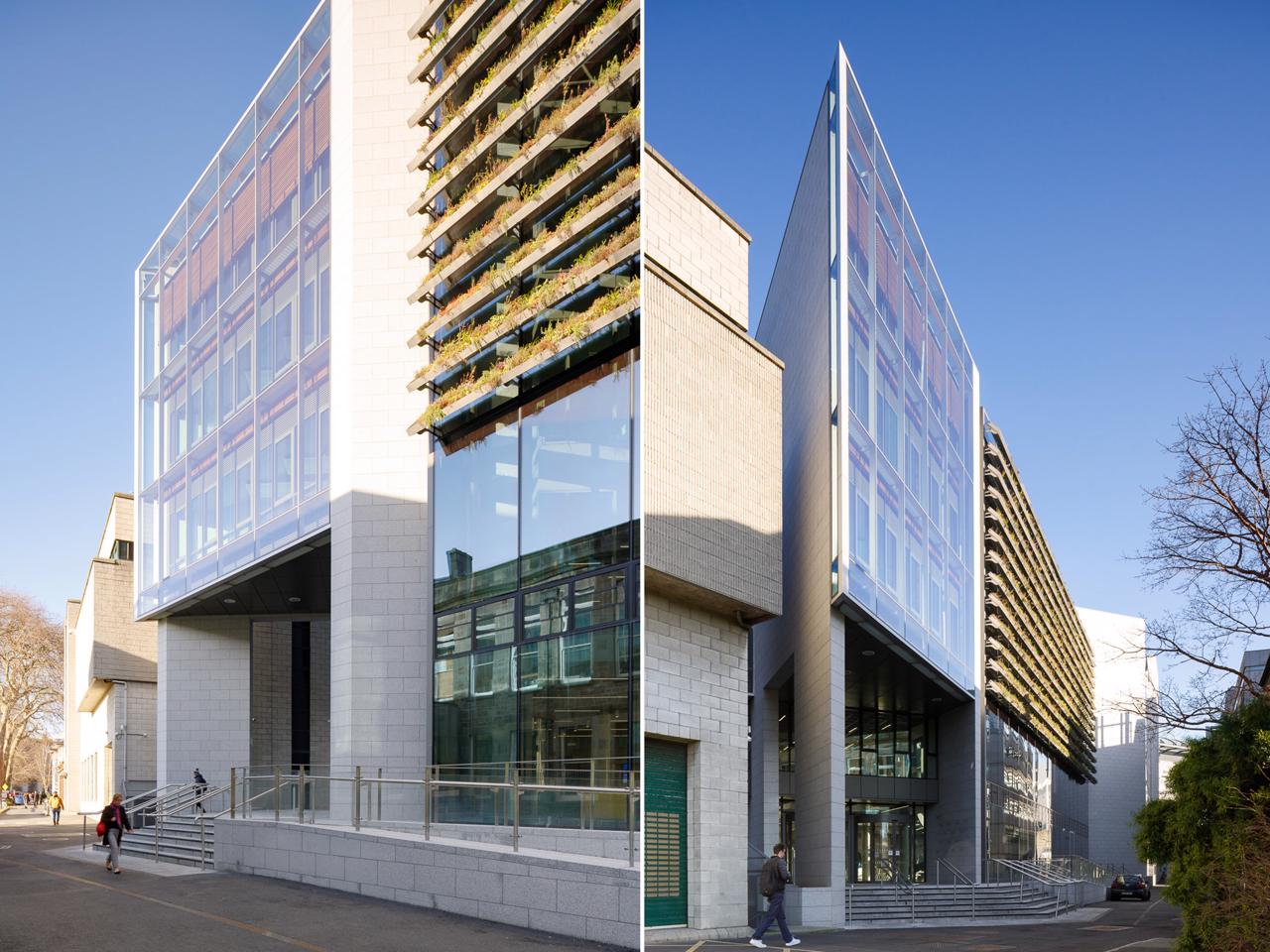
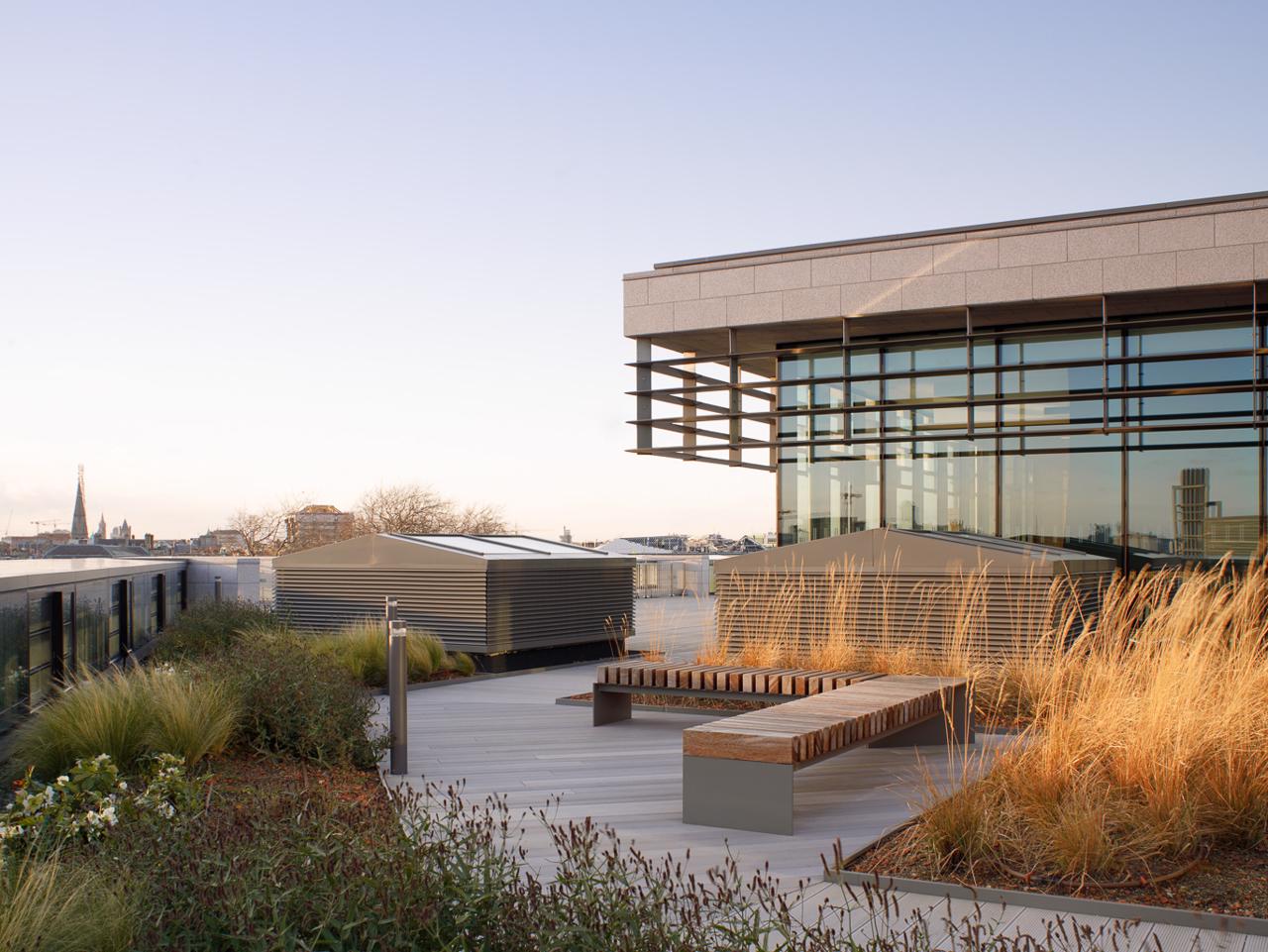
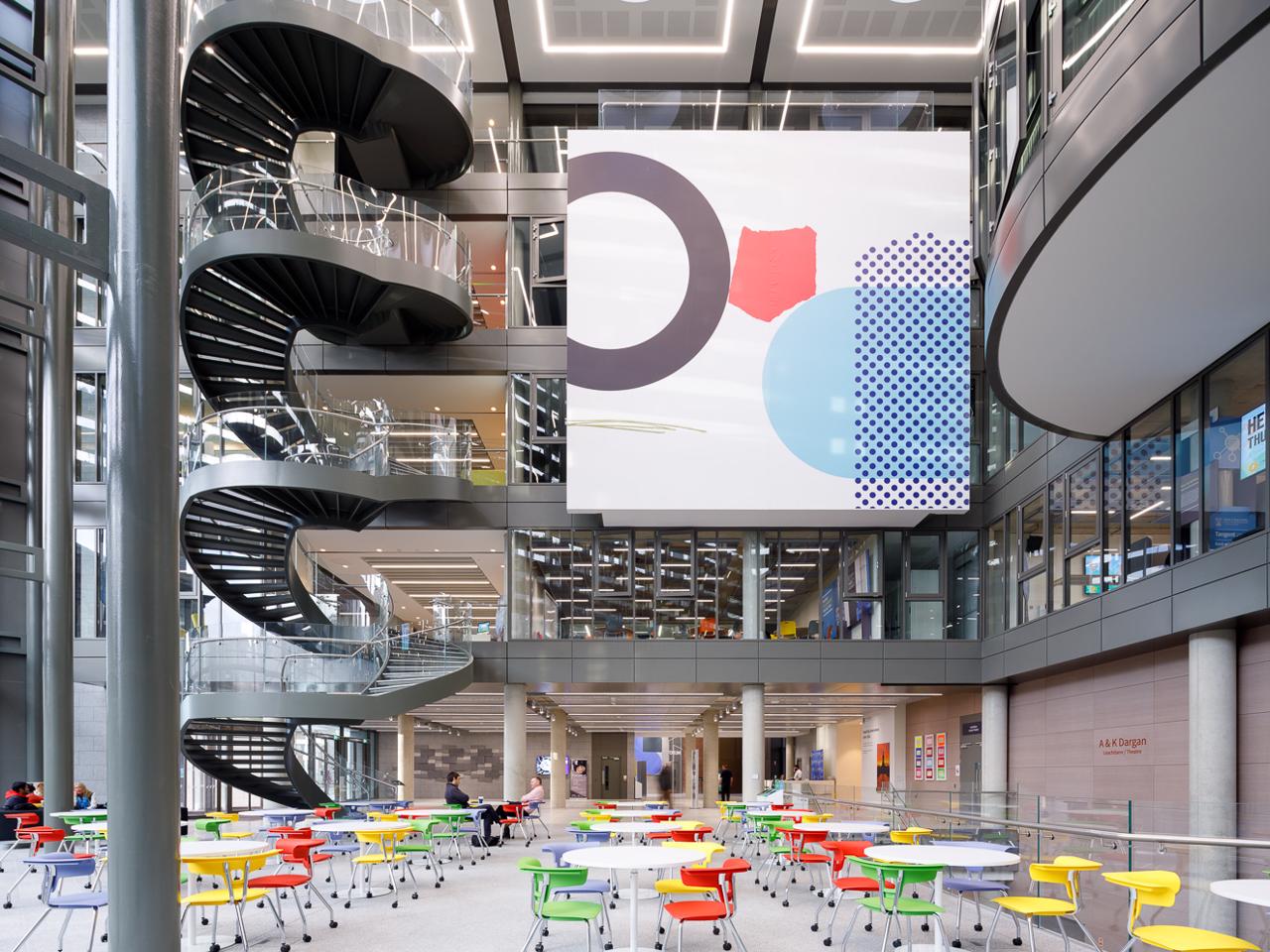
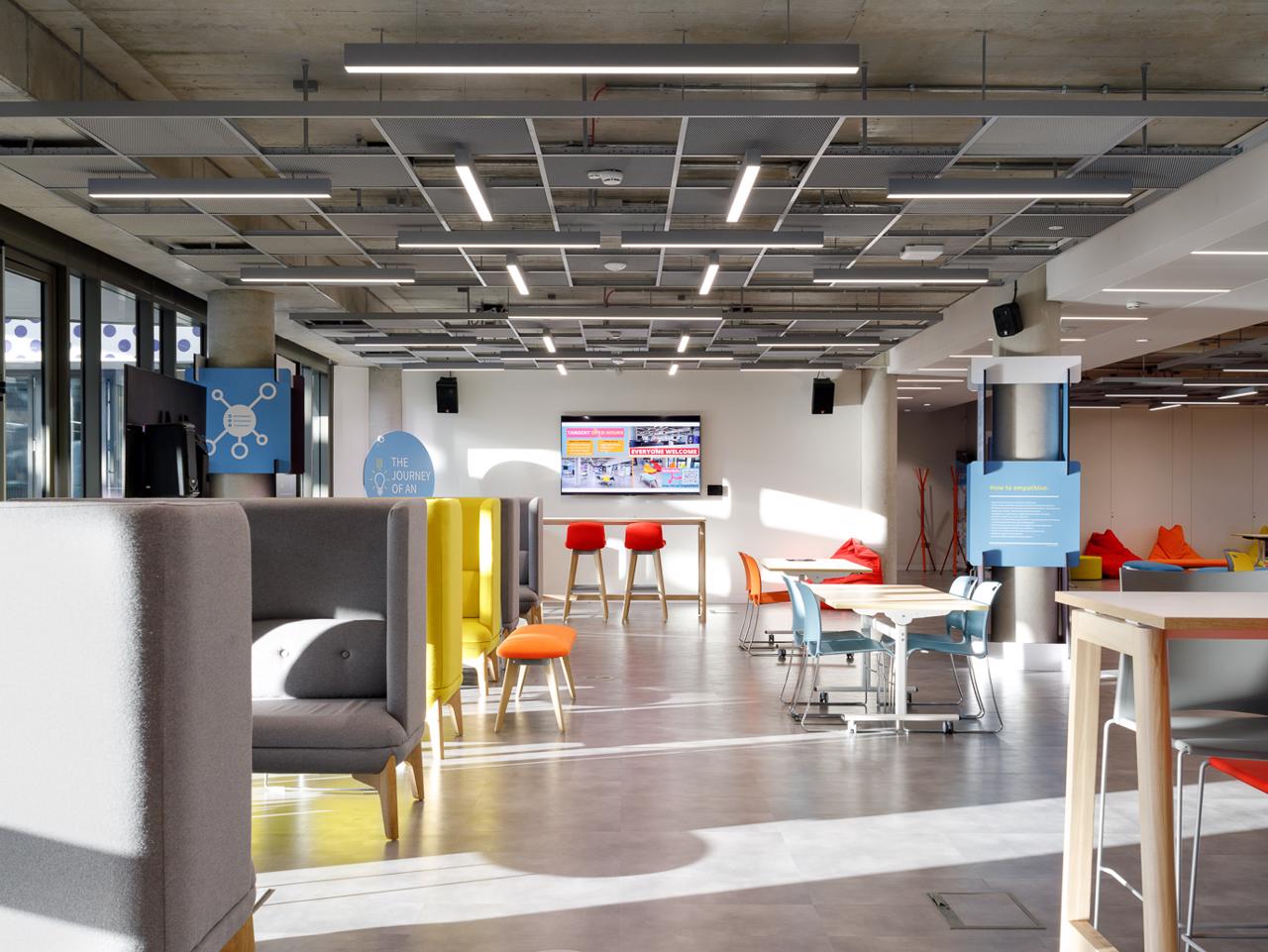
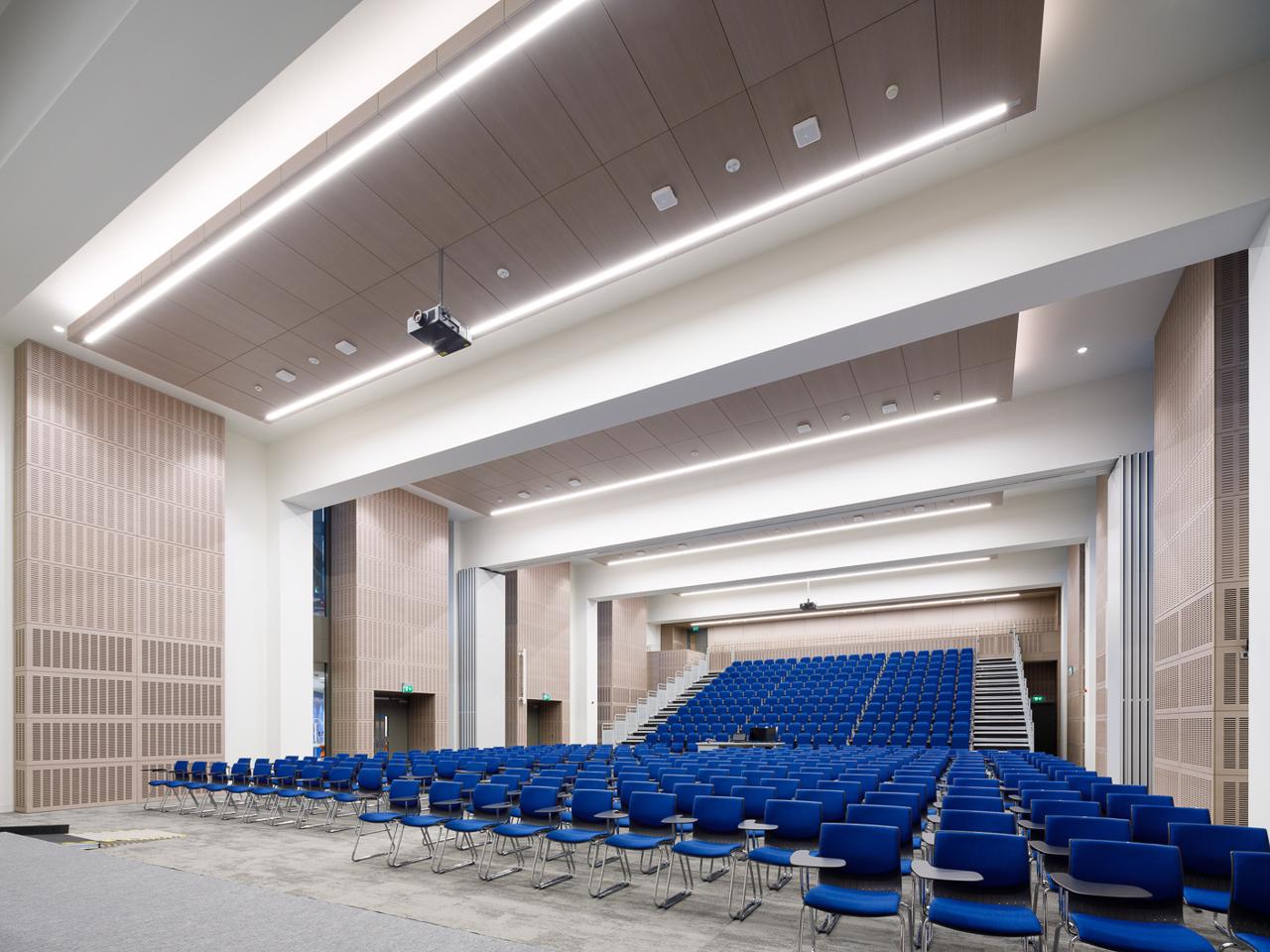
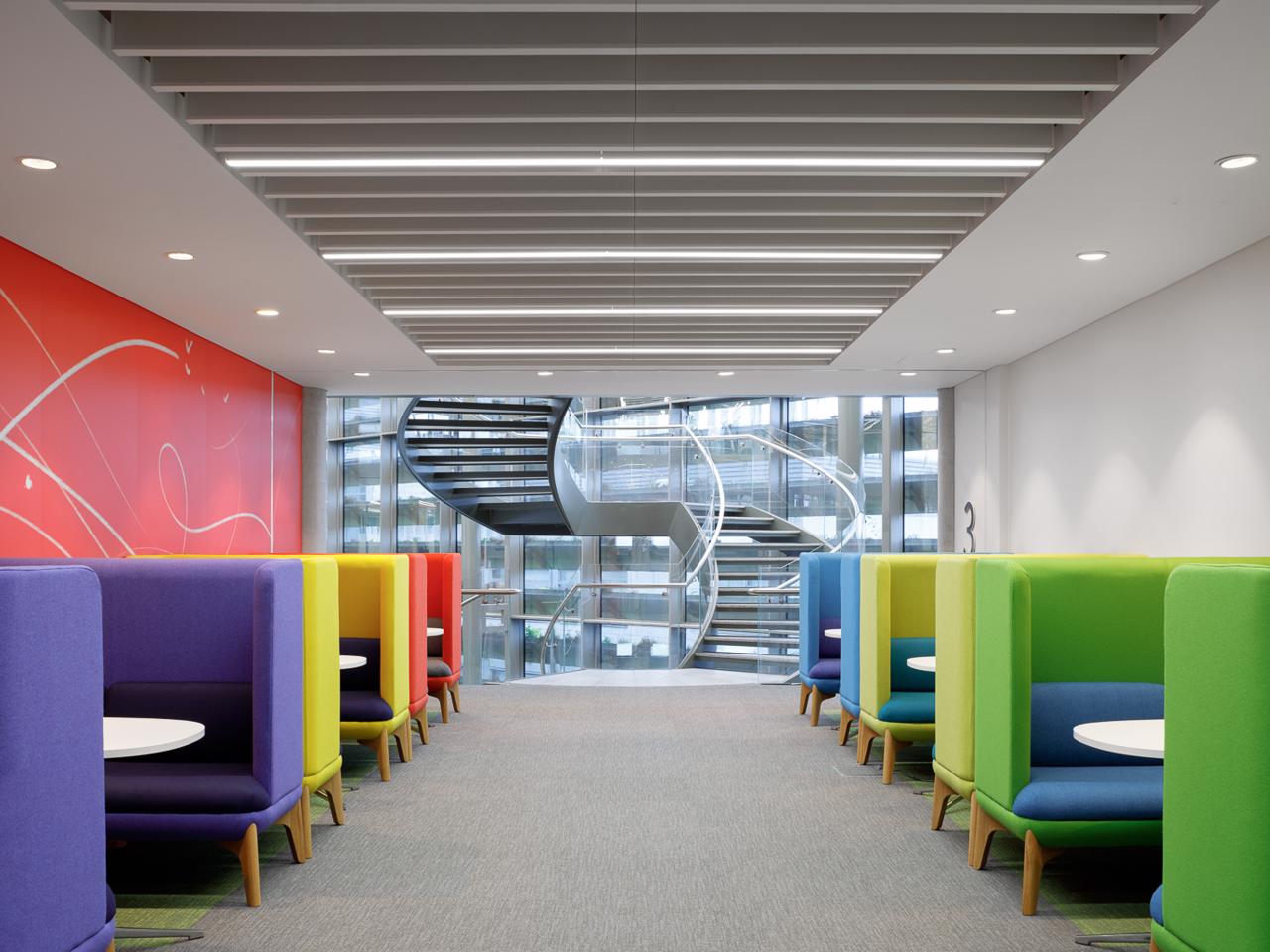
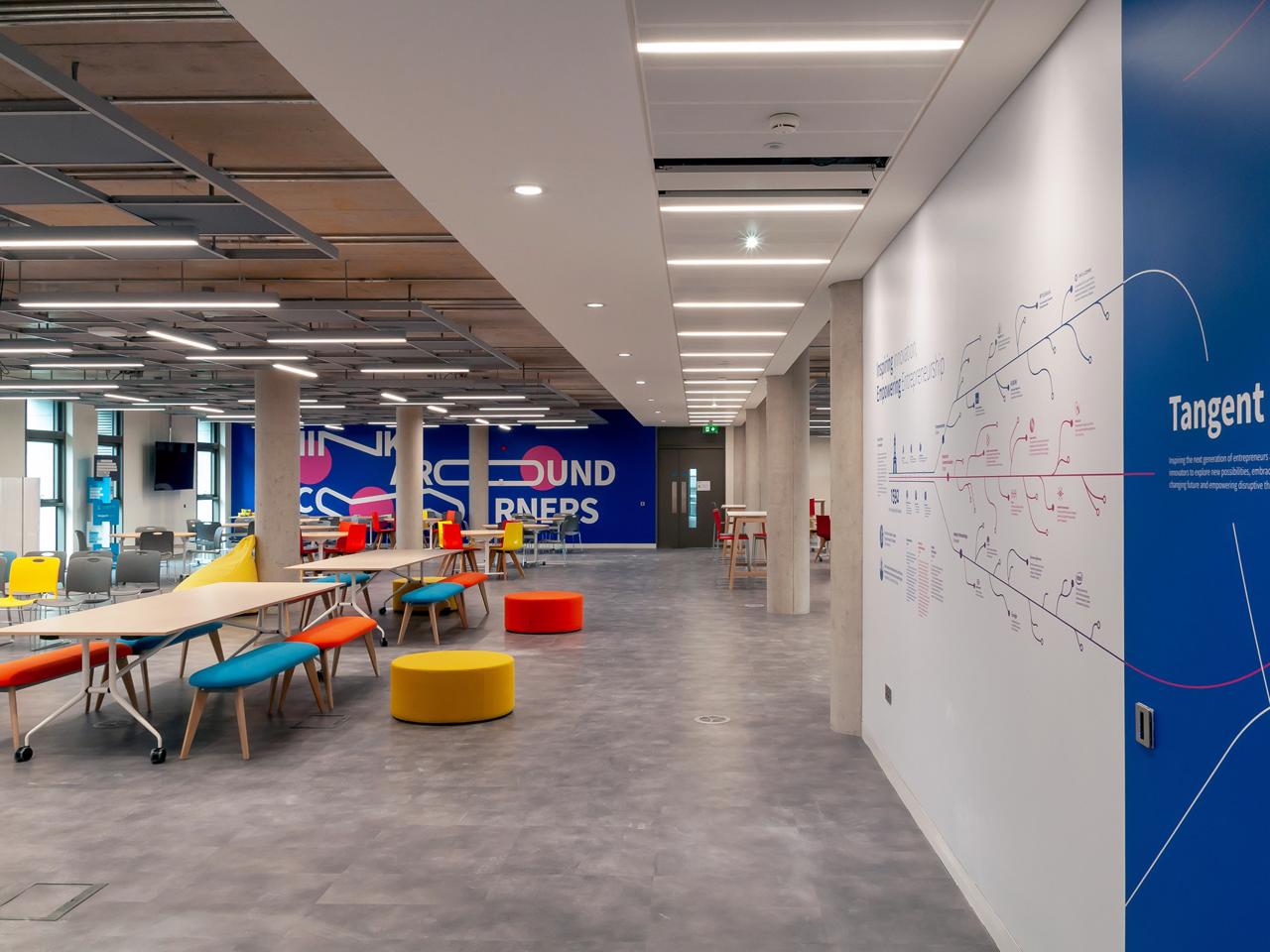
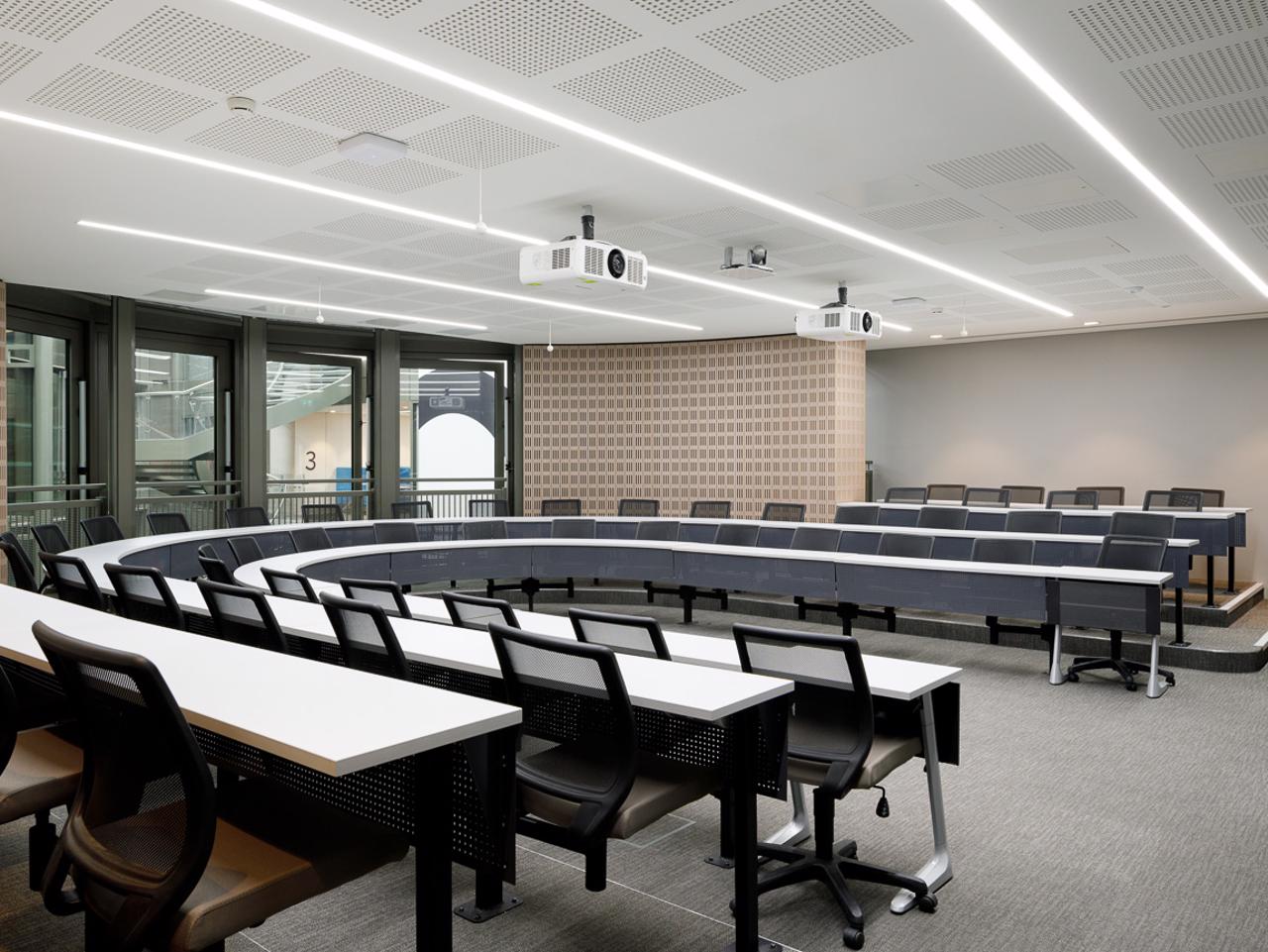
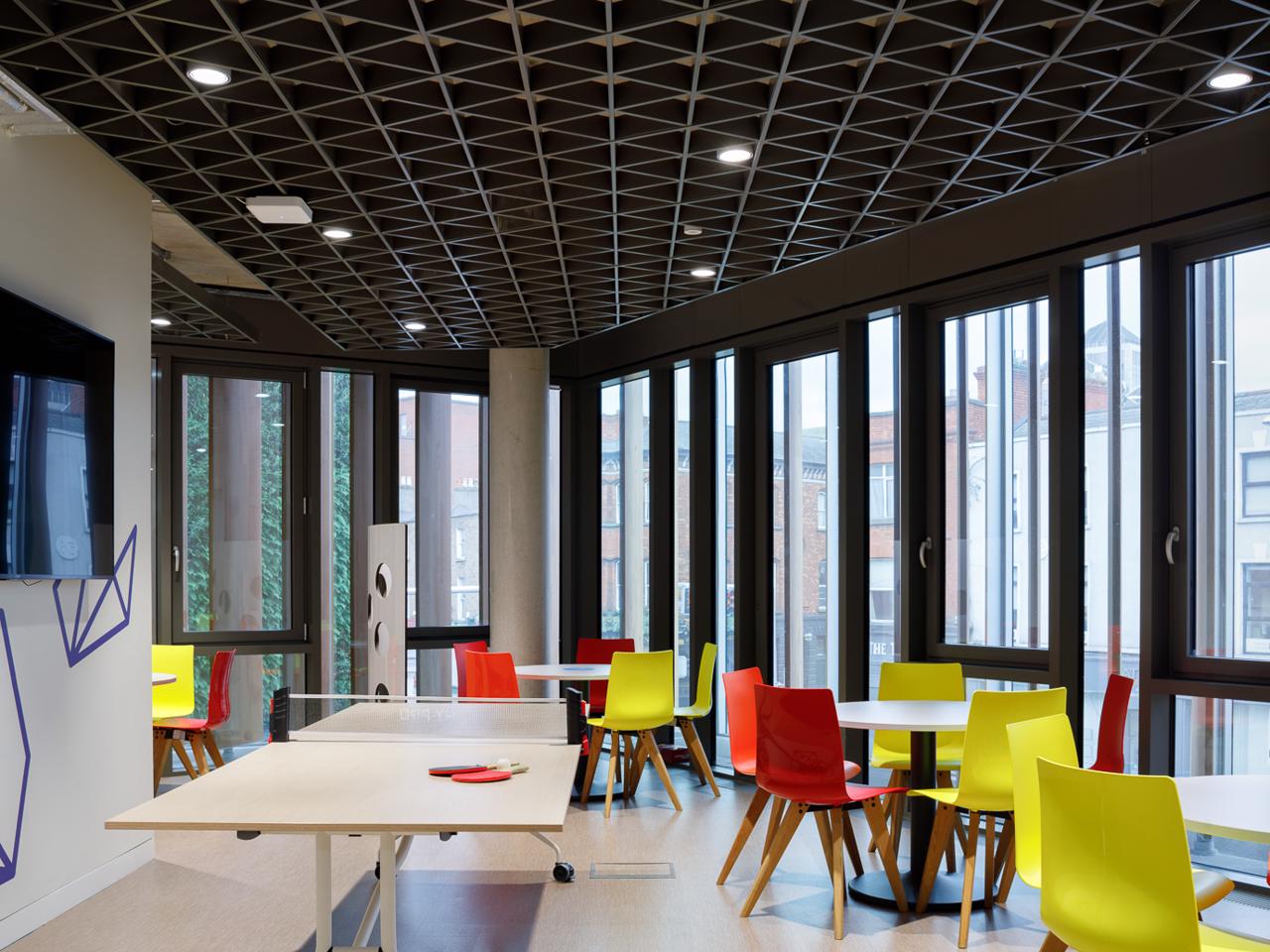
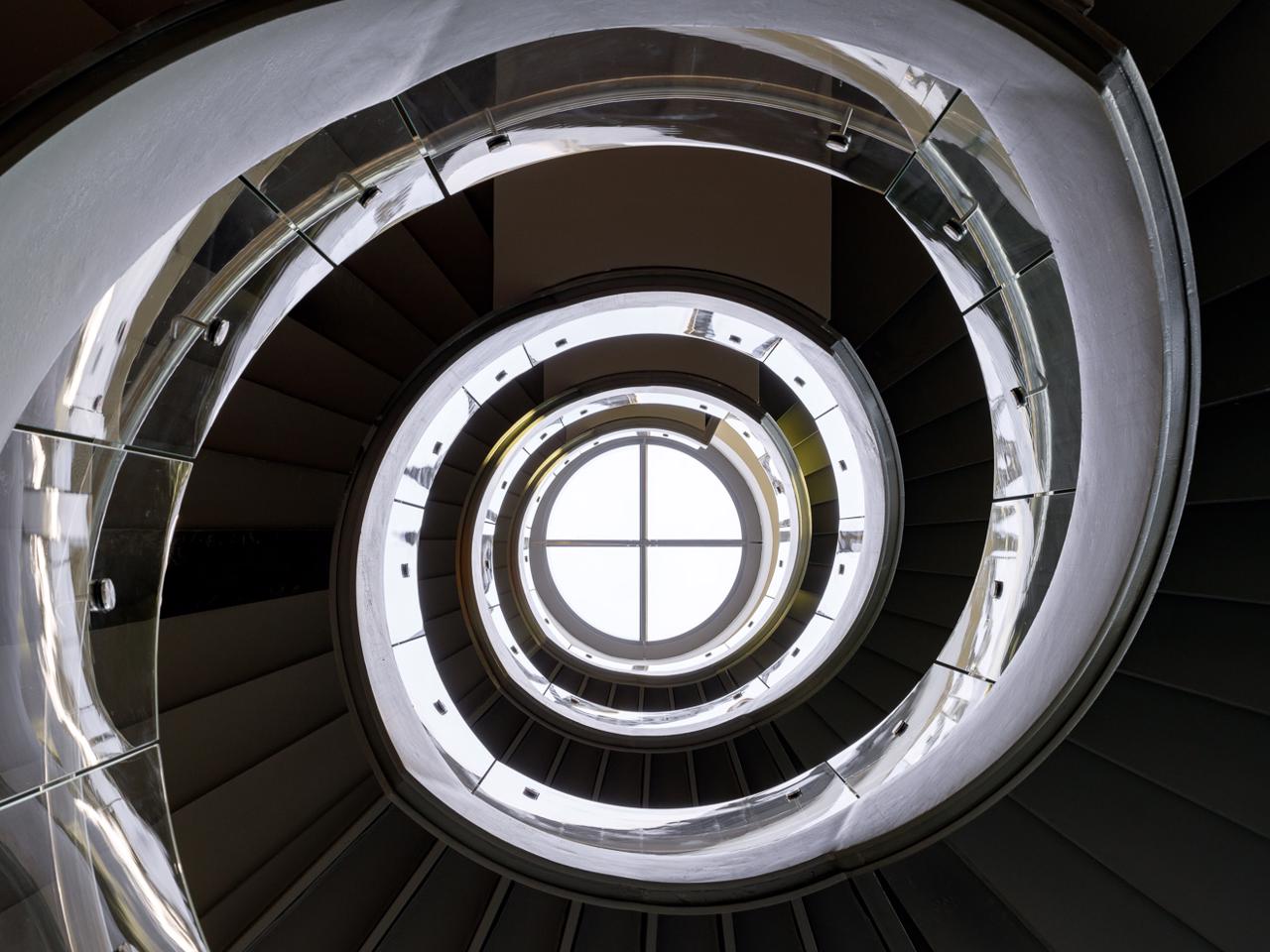














Education Project of the Year Award
Irish Construction Industry Awards
0
Sustainability Award
Building and Architect of the Year Awards
0
Client
Trinity College Dublin
Location
Dublin, Ireland
Status
In Use
Area
12000
Accommodation is arranged around a central triangular atrium space which allows informal gathering, circulation, breakout and exhibition space. Facilities provided in the building include a 600 person multi-mode lecture theatre, raked undergraduate lecture theatres, classrooms and teaching space.
Innovation and Entrepreneurship are located on the First Floor Level. This facility will provide incubator space and offices for businesses to encourage links between students, faculty members and the business community.
The Second, Third and Fourth Floors are allocated to the Business School. Executive Education is located at Fifth Floor Level together with a new College Boardroom and associated facilities. The Boardroom has views over the Trinity campus and the Rugby Pitch and has access to generous green roof space. The top floor is allocated to executive education.
The architecture of the building is both a bold statement of modernity and sensitive response to its surrounding environment, the elevated railway line, the listed Georgian houses and the internal views from the historic core of the campus.
In August 2013, the governance board of Trinity College Dublin included a vision statement for a new Business School in the invitation to tender for design team members circulated via the Irish Public Procurement Service. The Invitation to tender required the Project Team to develop the preferred design to a Level 2 maturity Building Information Model (BIM) to allow the procurement of a Construction Contractor (i.e. managed 3D environment held in separate discipline ‘BIM’ models and tools with attached data. Key requirements included:
The Trinity Business School has been designed to ensure it will operate on low energy and low maintenance principles throughout its lifespan. Crucially, the Trinity Business School has been designed and built to ensure that its energy performance complies with the Recast (EPBD) European Performance of Buildings Directive 2010/30/EU, which requires every new public building will adhere to “Nearly Zero Energy Building (nZEB)” by the 31st December 2018 onwards.
The building has been designed to achieve a Building Energy Rating (BER) of A2, with a Primary Energy saving of 60% and over 500 tonnes of Carbon per annum when compared to an equivalent benchmark building.
The Trinity Business School utilises a double-skin façade and central atrium space to maximise the use of Daylight and Natural Ventilation through the occupied spaces. The double-skin façade incorporates high-performance glazing with motorised vertical shading elements and feature planted horizontal brise-soleil screens are provided to the atrium space to reduce heat gain within the building by deflecting sunlight. This design approach also protected against noise pollution from the adjacent DART railway line and traffic for the Pearse Street entrance.
The key sustainable design principles of the Trinity Business School are low energy building systems (low-velocity air systems and displacement ventilation systems), LED-based lighting, Rainwater Harvesting and 500 m² of PV Panels which will offset 35 tonnes of Carbon per annum. The building was also designed to incorporate a number of Green Walls to benefit from the environmental and psychological benefits generated by the micro-climates they create.